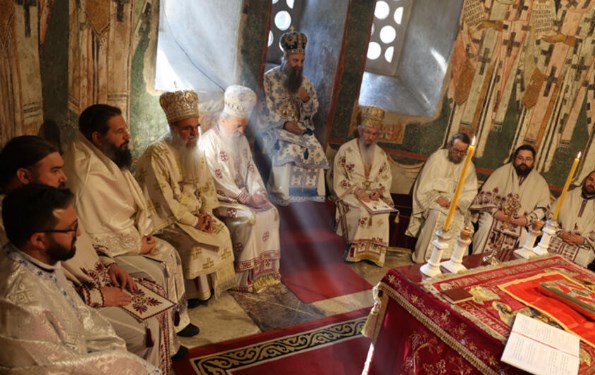
In a rapid succession of events during the month of May, the Orthodox Church in Northern Macedonia, which had been separated from other Orthodox churches for 55 years due to an unresolved conflict with the Serbian Patriarchate, was recognized by the Ecumenical Patriarchate (EP) of Constantinople and also restored into communion with the Serbian Orthodox Church (SOC). This culminated a week later in the official recognition of its autocephaly by Serbian Patriarch Porphyry during a visit to the Northern Macedonian capital of Skopje. The break between the churches had occurred in 1967, when the Macedonian Church—which had enjoyed an autonomous status—unilaterally proclaimed its full independence (autocephaly). At that time, both Serbia and Northern Macedonia were parts of what used to be Yugoslavia, and the move toward autocephaly was supported by then-communist authorities in order to weaken the Serbian church. Over the past two decades, there had been several failed attempts at reconciliation. According to a researcher of church autocephaly movements, Andreja Bogdanovski, the SOC’s consistent position had been in favor of a restoration of links based on autonomy, followed by discussions about possible autocephaly (Orthodoxy in Dialogue, May 13).
Since 2018, impressed by developments in Ukraine, Northern Macedonian authorities undertook concerted efforts with the church to find a solution to a religious issue that was also a topic of national significance. Following several rounds of talks, closed-door discussions between both church bodies in early May inspired optimism, although few expected such a rapid recognition of Macedonian autocephaly. What remains unclear at this point is how far the moves were made in coordination between the EP and the SOC. While the Moscow Patriarchate had initially been critical of the announcement by the EP, it welcomed the decision once it was made by the SOC. The acceptance of the Northern Macedonian Church into the communion of Orthodox churches must be seen in the context of the current redrawing of the map of Orthodoxy with the war in Ukraine and consequent loss of influence of the Russian Church. The Munich-based scholar Anargyros Anapliotis suggests that the dramatic tensions around Orthodox churches in Ukraine may have convinced Serbian bishops that a peaceful restoration of relations with a recognition of autocephaly would be better than a complete and conflictual break, thus also preserving the SOC’s own interests in Northern Macedonia (Neue Zürcher Zeitung, May 27).
One can still expect some debates regarding the issue of the name to be used by the Church of Northern Macedonia, since the EP had insisted that it should not go by the official name of “Macedonian” but rather use the name of the famous ecclesiastical see of Ohrid. The EP had also laid down restrictive rules concerning parishes of the Macedonian diaspora, but those seem unlikely to be enforced. According to Bogdanovski, the issues surrounding Macedonian autocephaly “will almost certainly ignite a new discussion surrounding the principles and ways for granting autocephaly.” Moreover, he wonders how far the handling of the Macedonian church question might promote the SOC and its patriarch “as the ‘canonical champion’ in the Orthodox world, after years of deep divisions in the Orthodox Church” (Religion in Praxis, May 24).

Source: Republika.